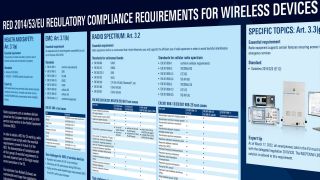Radio equipment must comply with the “essential requirements” covered in article 3 of the RED. Beside general requirements relating, for example, to the protection of health and safety covered by Article 3.1(a) and electromagnetic compatibility covered by Article 3.1(b), the RED also contains fundamental technical requirements covered by Article 3.2. While R&TTE mainly focused on radio transmitters, the new RED adds a crucial requirement and explicitly covers the receiver sections of radio equipment as well as mere radio receivers. Radio equipment must not only effectively use the radio spectrum, it must also support the efficient use of the radio spectrum to avoid interference with terrestrial and orbital communications.
Ready for RED?
The new radio equipment directive RED 2014/53/EU adopted by the European Union on April 16, 2014, replaces the previous directive RTTED 1999/5/EC, better known as R&TTE. Published on May 22, 2014, the RED took effect on June 13, 2016, with an additional transition period of one year for manufacturers to comply with the new requirements.
RED raises the requirements on radio equipment such as broadcast digital TV and radio receivers, mobile phones, satellite receivers and any equipment that uses WLAN, Bluetooth or ZigBee. With RED, not only radio transmitters, but also radio receivers have to meet minimum regulatory performance requirements and need to be tested.










